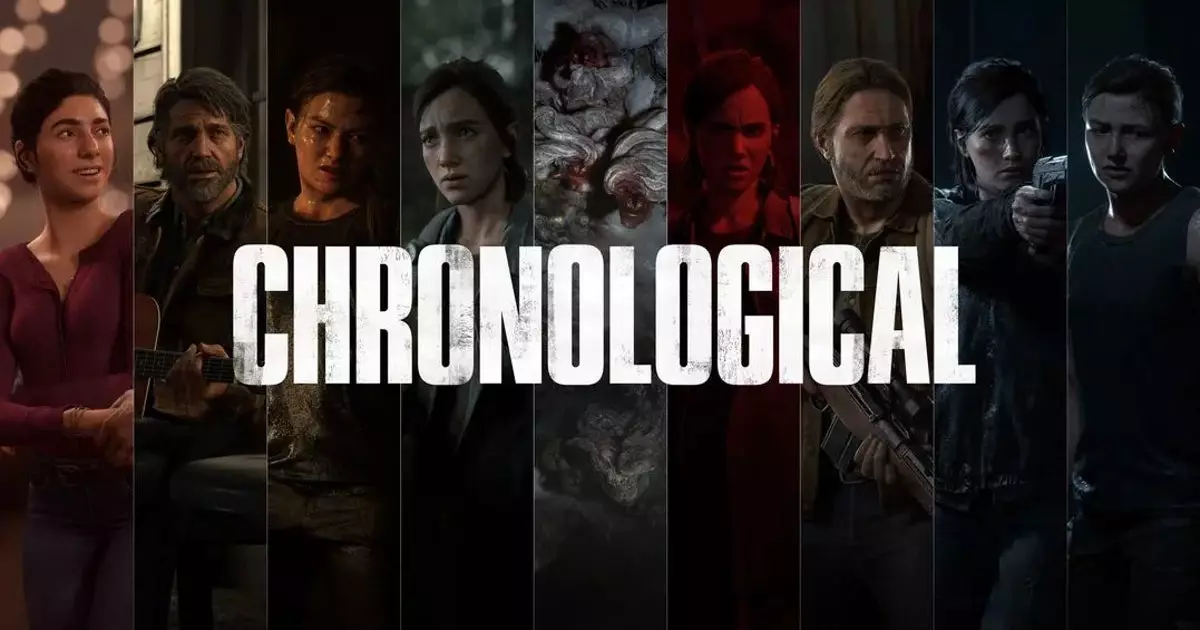In the evolving landscape of video games, narrative complexity has become both a strength and a source of debate. Developers are increasingly experimenting with storytelling structures, pushing boundaries and challenging players’ perceptions of narrative coherence. Naughty Dog’s latest move to introduce a chronological mode for *The Last of Us Part II* exemplifies this trend. While some may consider it an innovative exercise in narrative transparency, I see it as a provocative experiment that risks undermining the emotional depth and thematic resonance that the original non-linear storytelling masterfully crafted.
This overhaul reveals a fundamental misunderstanding of why non-linear storytelling works so effectively in games like *The Last of Us*. The game’s intricate plot relies heavily on flashbacks, character revelations, and the layered unfolding of motives, all of which are carefully designed to evoke empathy and moral ambiguity. By stripping away the game’s deliberately fragmented timeline, the developer appears to underestimate the importance of emotional pacing. Chronology is not just a storytelling choice; it is an emotional engine that heightens suspense and complicates moral judgments.
The Danger of Over-Simplification
Transforming a complex narrative into a straightforward timeline might seem attractive—offering clarity and easier comprehension. However, it dismisses the nuanced beauty of storytelling that refuses to be linear. Stories like *The Last of Us Part II* are better appreciated for their layered revelations and deliberate misdirection. When players are forced to see events strictly in order, the game’s thematic ambiguities could be flattened into a predictable sequence, reducing the moral dilemmas and emotional stakes that made the original memorable.
Furthermore, the introduction of this mode—accompanied by Disney-esque cosplay options for Joel and Tommy—feels like a superficial distraction that trivializes the mature themes embedded in the game. Instead of deepening understanding, it threatens to turn a profound narrative about revenge, loss, and redemption into a mere chronological puzzle, stripping away the complexity that makes it compelling. It’s as if the studio wants to make the game more digestible at the expense of its artistic integrity.
Misplaced Curiosity or Cultural Arrogance?
Naughty Dog’s assertion that this new mode offers “a fascinating new way to enjoy” the story borders on hubris. Having already crafted a highly praised, thematically rich game, their move seems more like an act of curiosity than a genuine desire to enhance the player experience. It raises concerns about whether such experimentation is driven by artistic necessity or simply a desire to generate buzz by breaking conventions.
In fact, their own marketing suggests that the story is “meticulously put together” and perhaps not intended for reordering. Yet, they proceed to repackage it in a way that might diminish its artistic achievement. It’s reminiscent of film directors releasing alternative cuts that serve more as novelty than enhancements. Sometimes, preserving the original order preserves the emotional resonance that has already been carefully calibrated. Disrupting it risks turning a beautifully crafted narrative into an overlapping jigsaw puzzle.
What Does This Say About Innovation in Gaming?
This controversial feature prompts a broader reflection on what constitutes meaningful innovation within gaming storytelling. Not every experiment leads to a better experience; sometimes, it exposes a lack of respect for the original artistic vision. Naughty Dog’s attempt seems to prioritize novelty over narrative integrity, risking alienation of players who value depth over convenience.
In a medium still grappling with its identity as an art form, these kinds of narrative experiments should be approached cautiously. A game’s story isn’t merely a sequence of events; it’s a carefully woven emotional tapestry meant to evoke specific reactions. By attempting to rethread this tapestry in chronological order, developers may inadvertently unravel the emotional fabric that made the original work impactful.
As game creators push for new ways to tell stories, they must remember that innovation should serve the story, not overshadow it. The core of powerful storytelling in games lies in understanding that structure is a tool—one that, when misused, can diminish the very themes it aims to enhance.
—
Note: This critique reflects my own analysis and opinion about Naughty Dog’s new narrative mode, emphasizing that sometimes, breaking the rules of storytelling isn’t the right move—even if it seems like a curious experiment. The true art in games lies in crafting experiences that respect the audience’s intelligence and emotional investment, not merely offering new ways to reassemble familiar tales.

